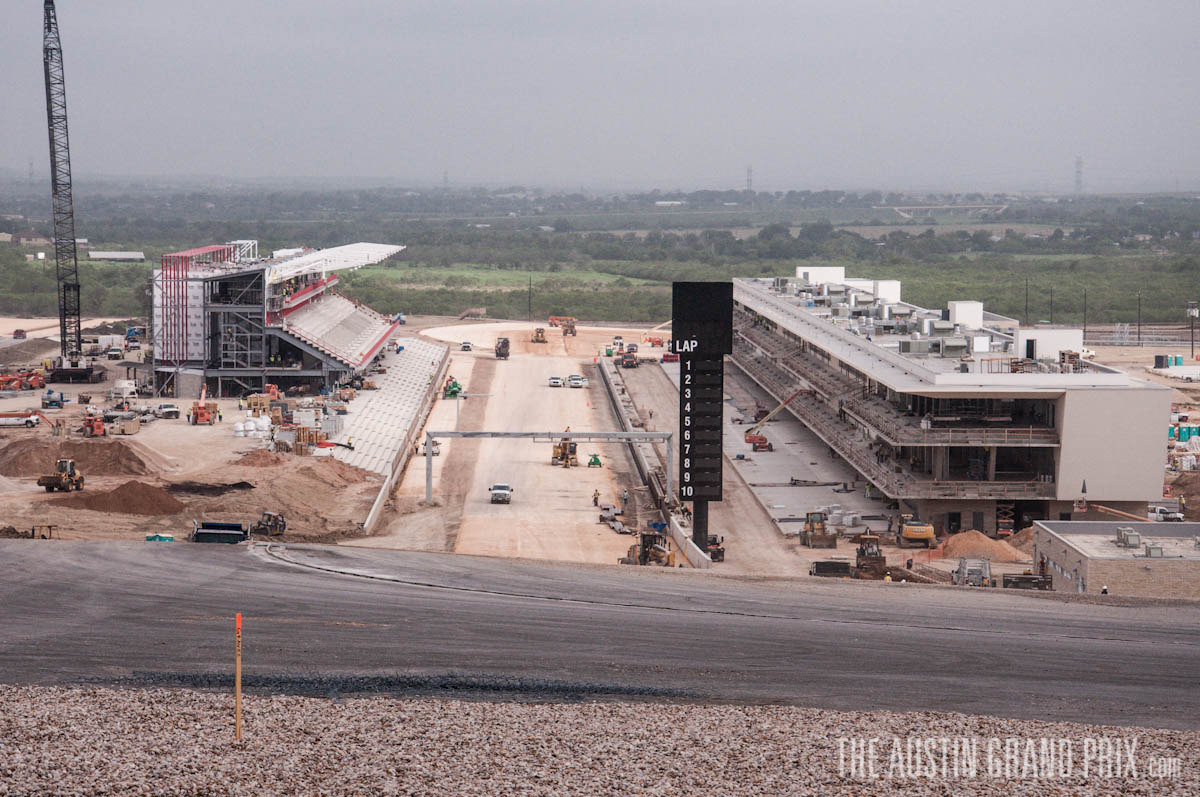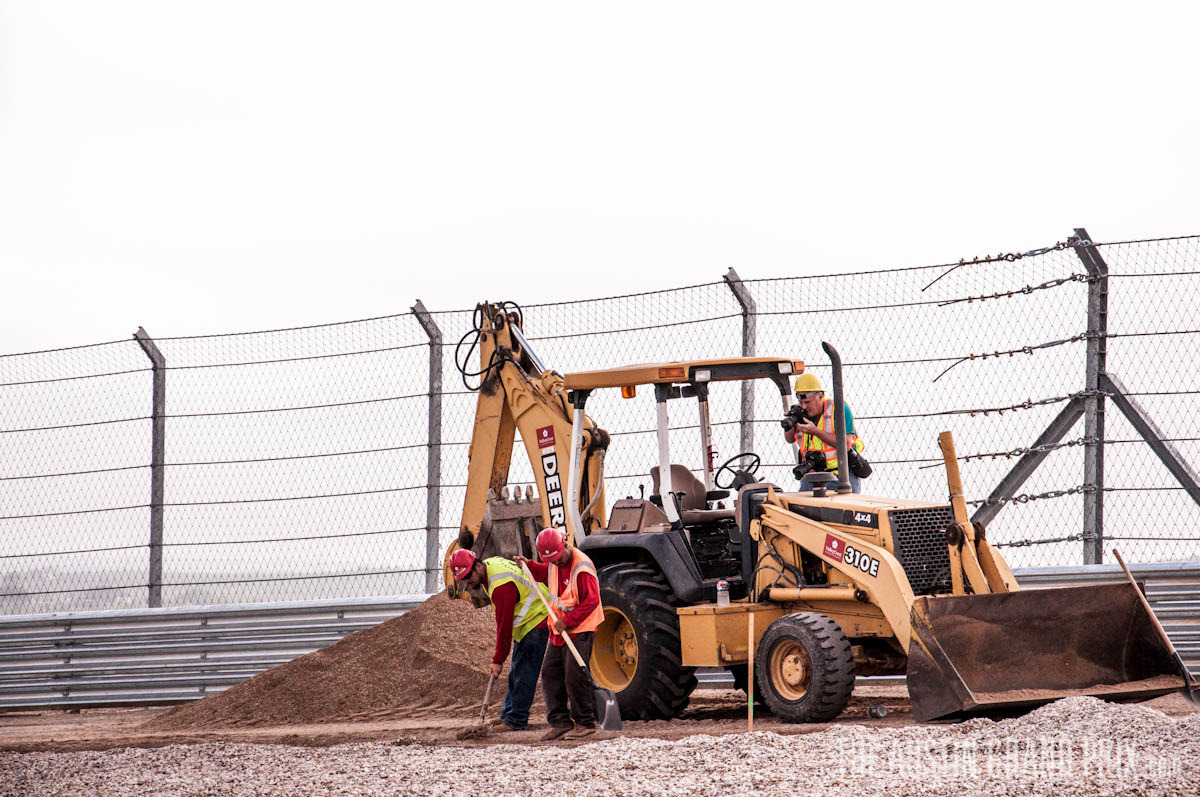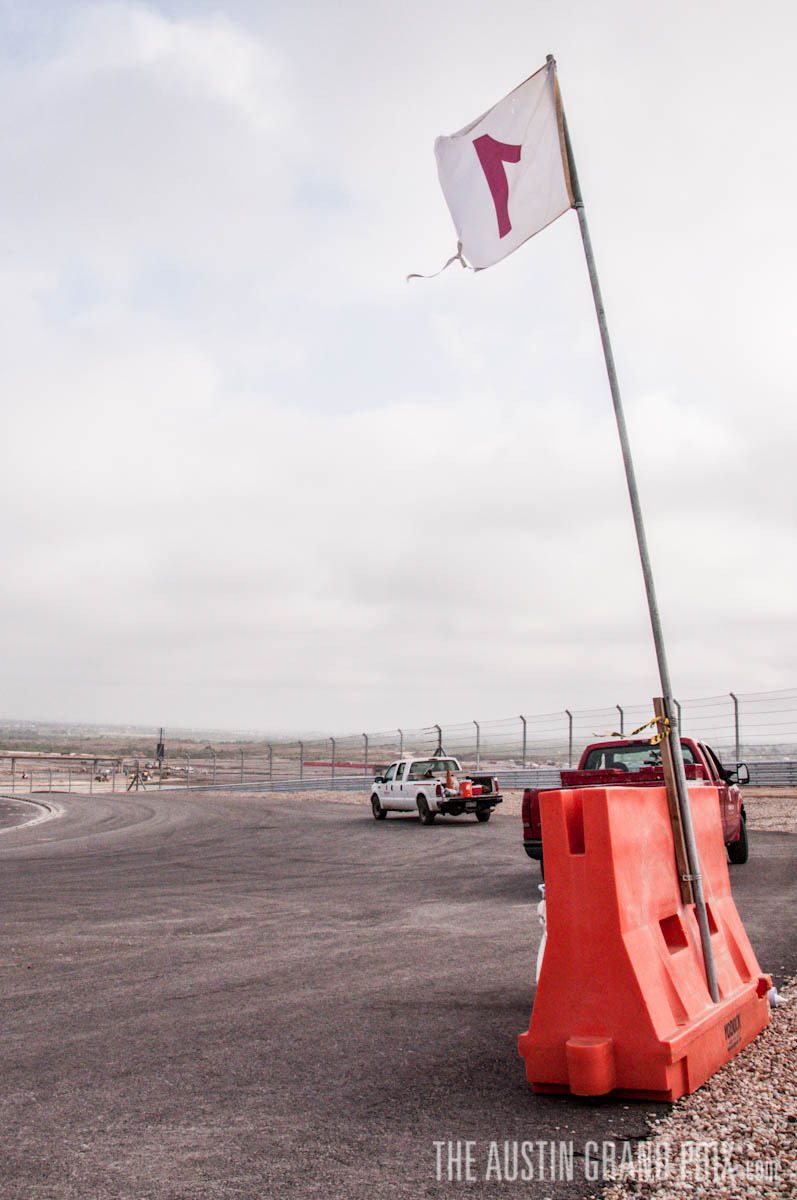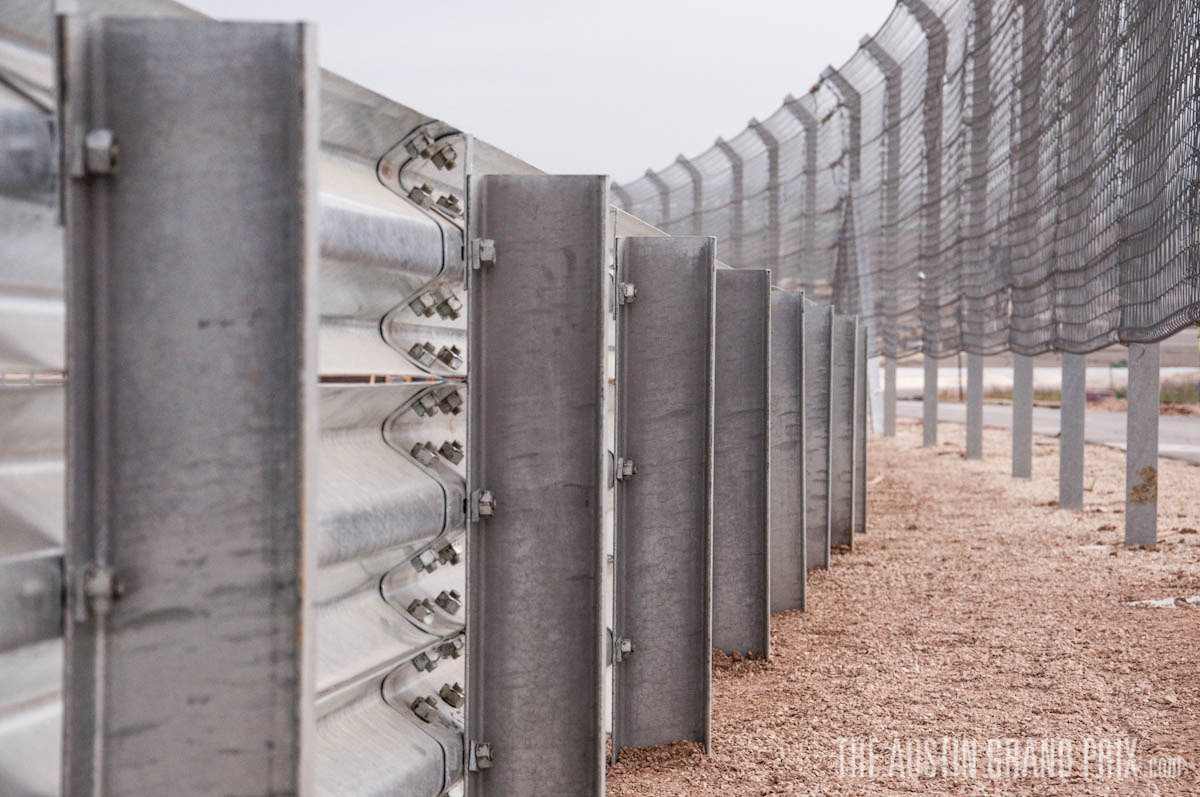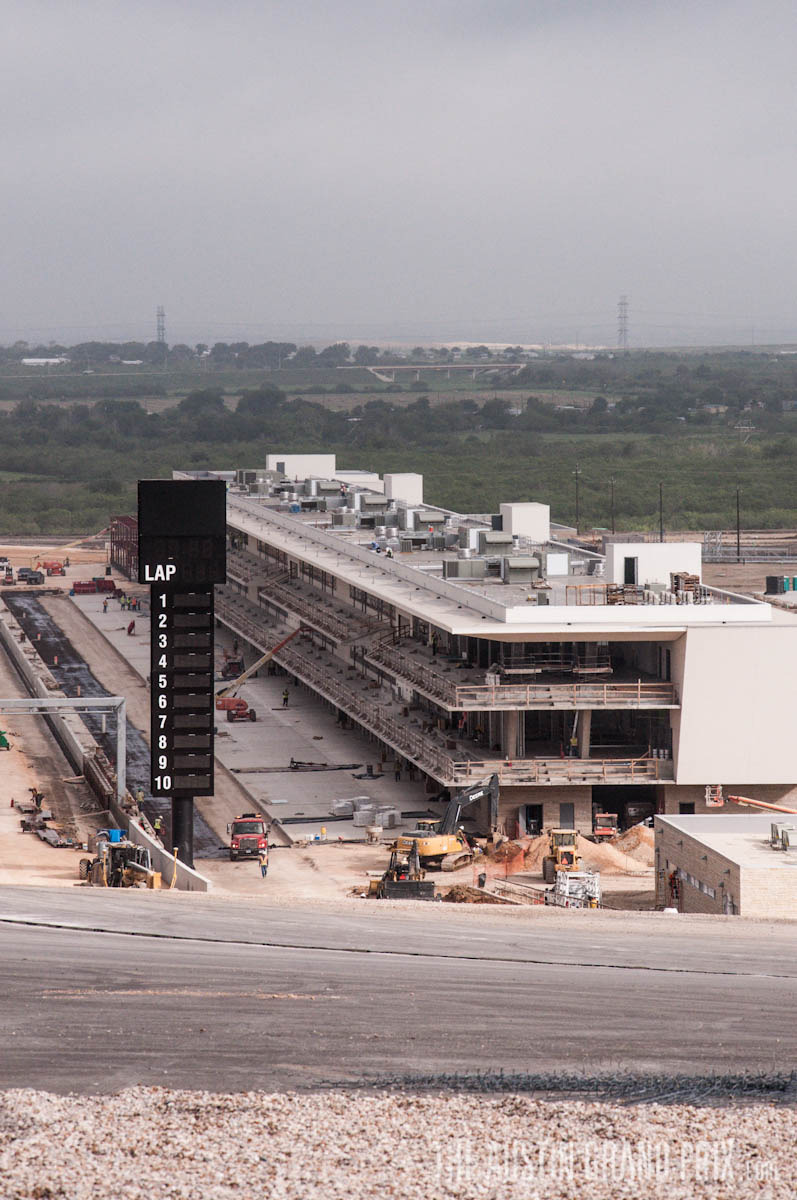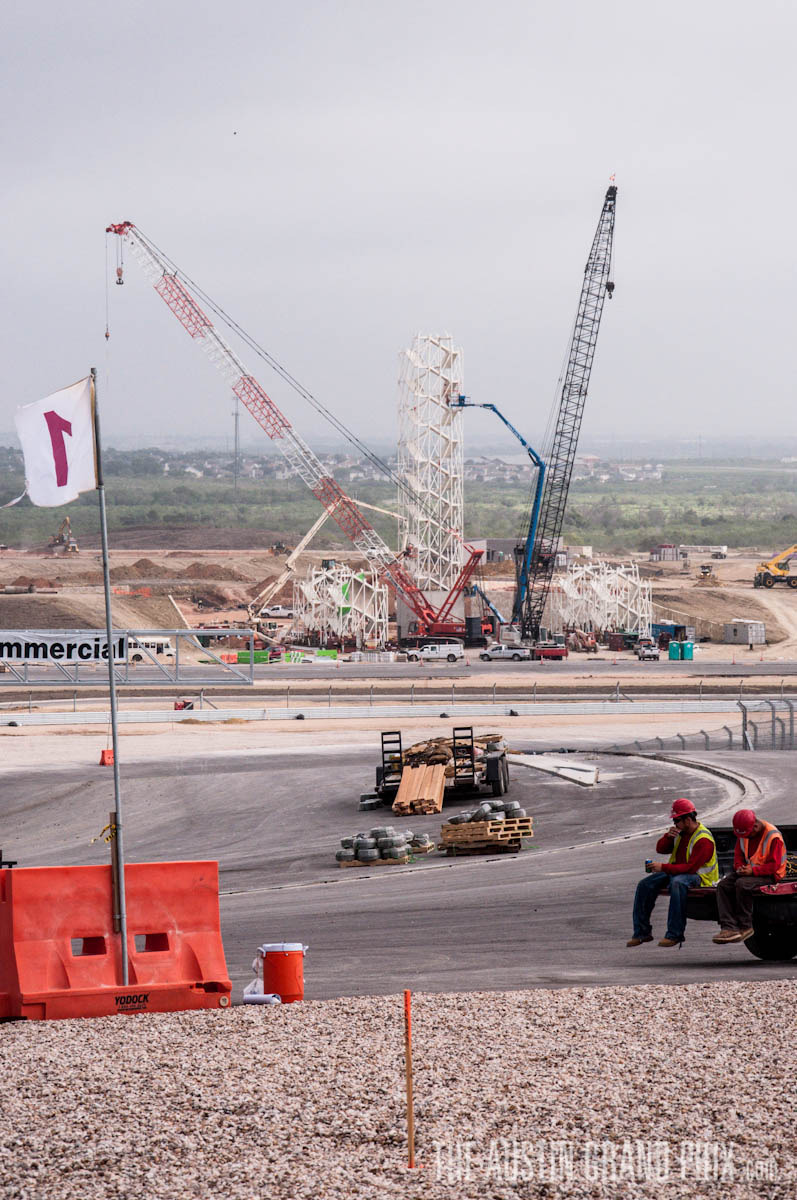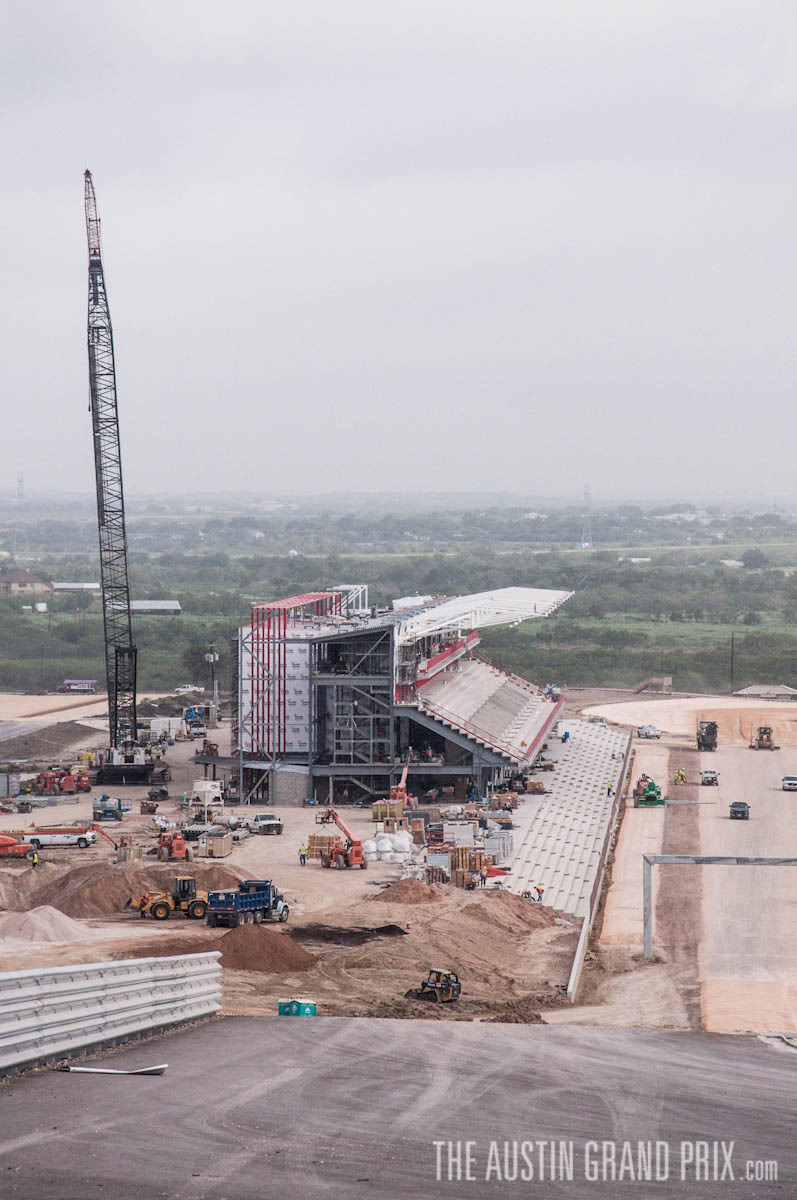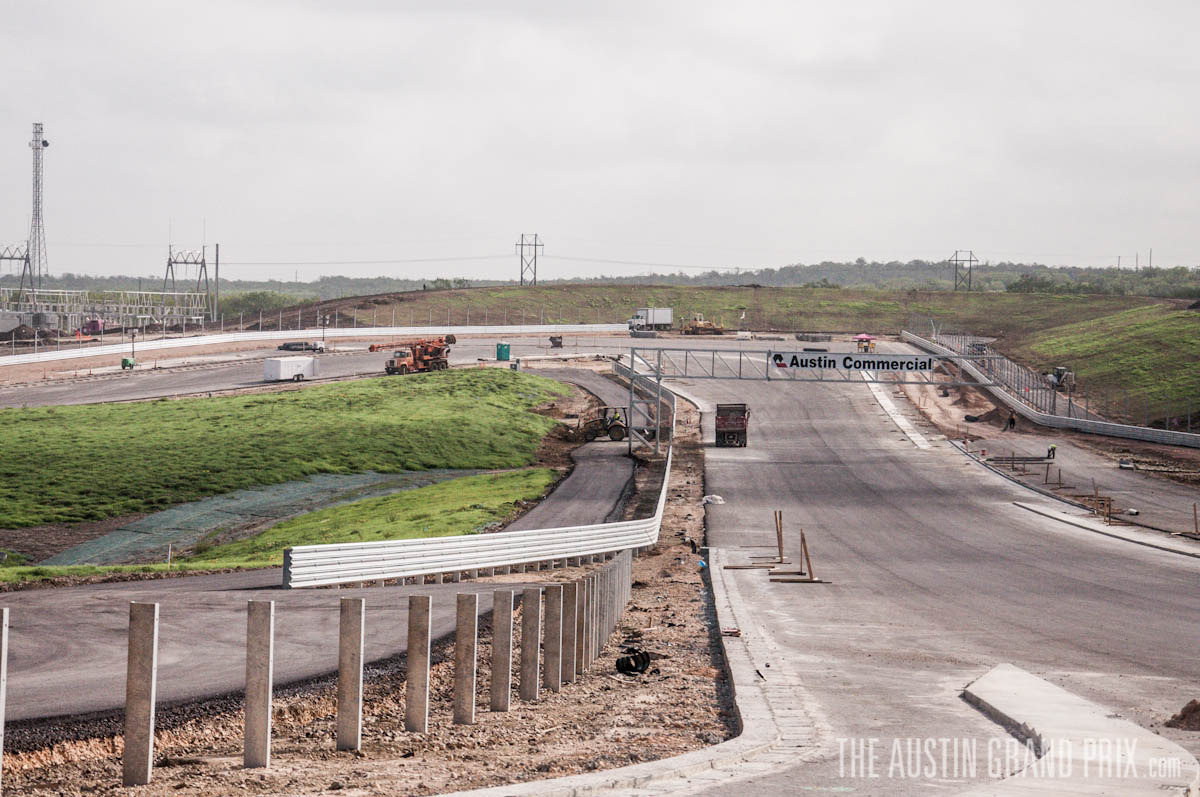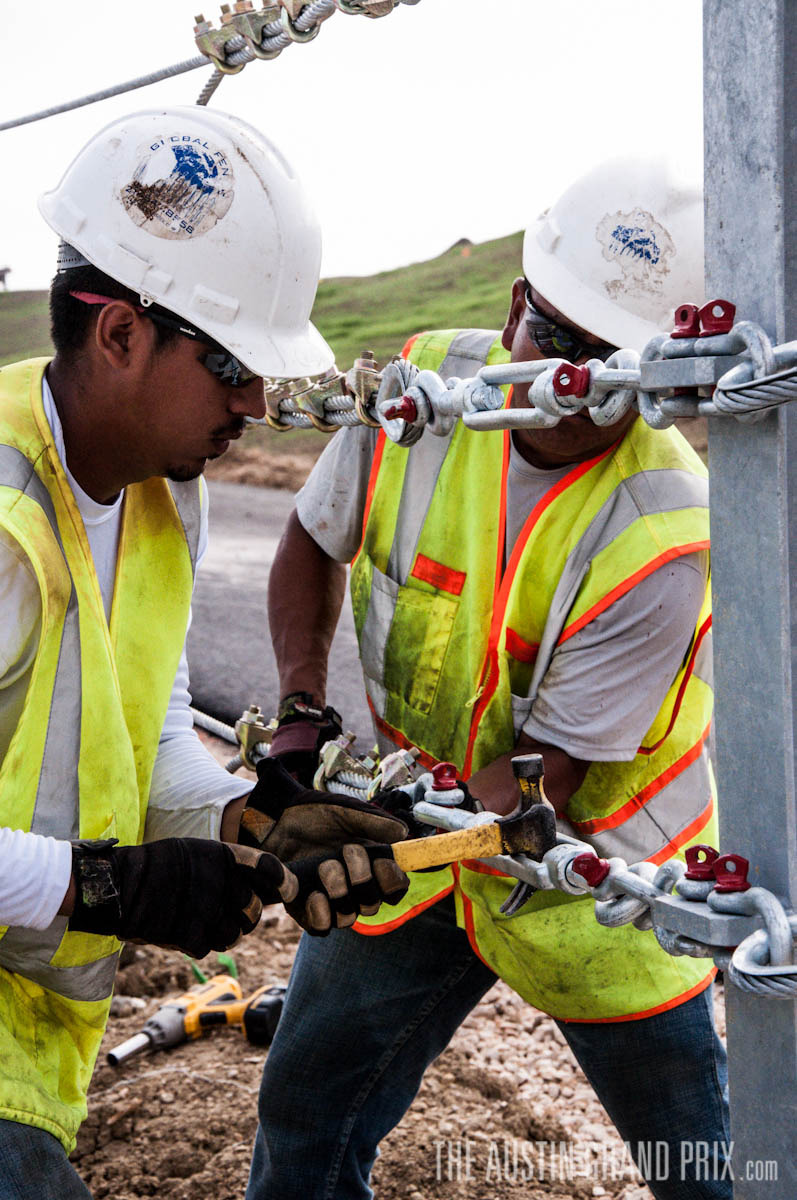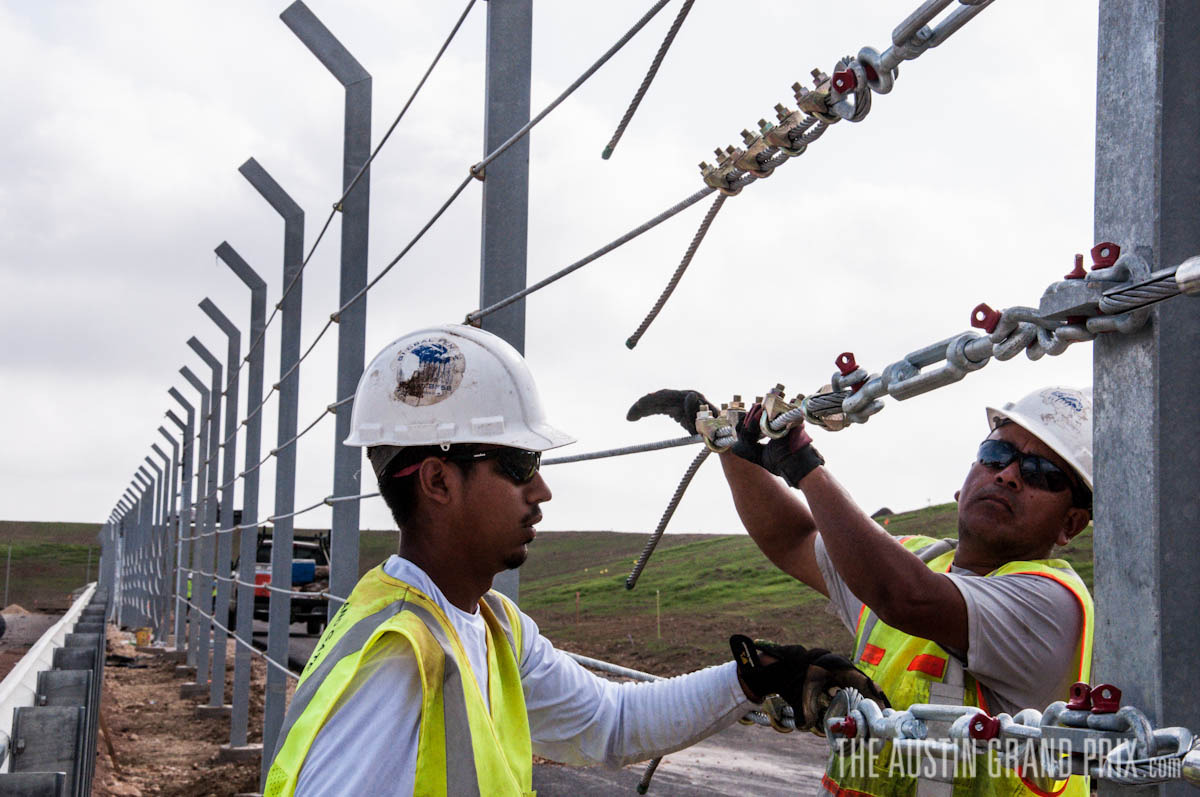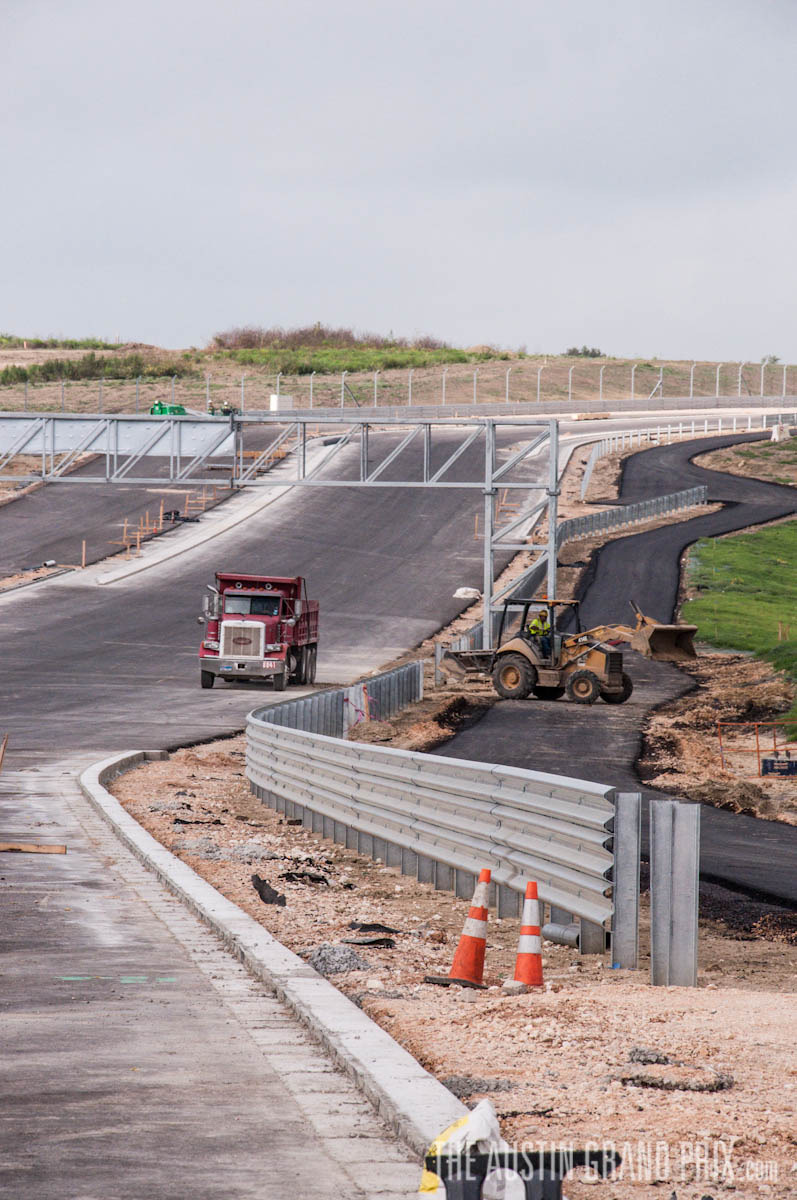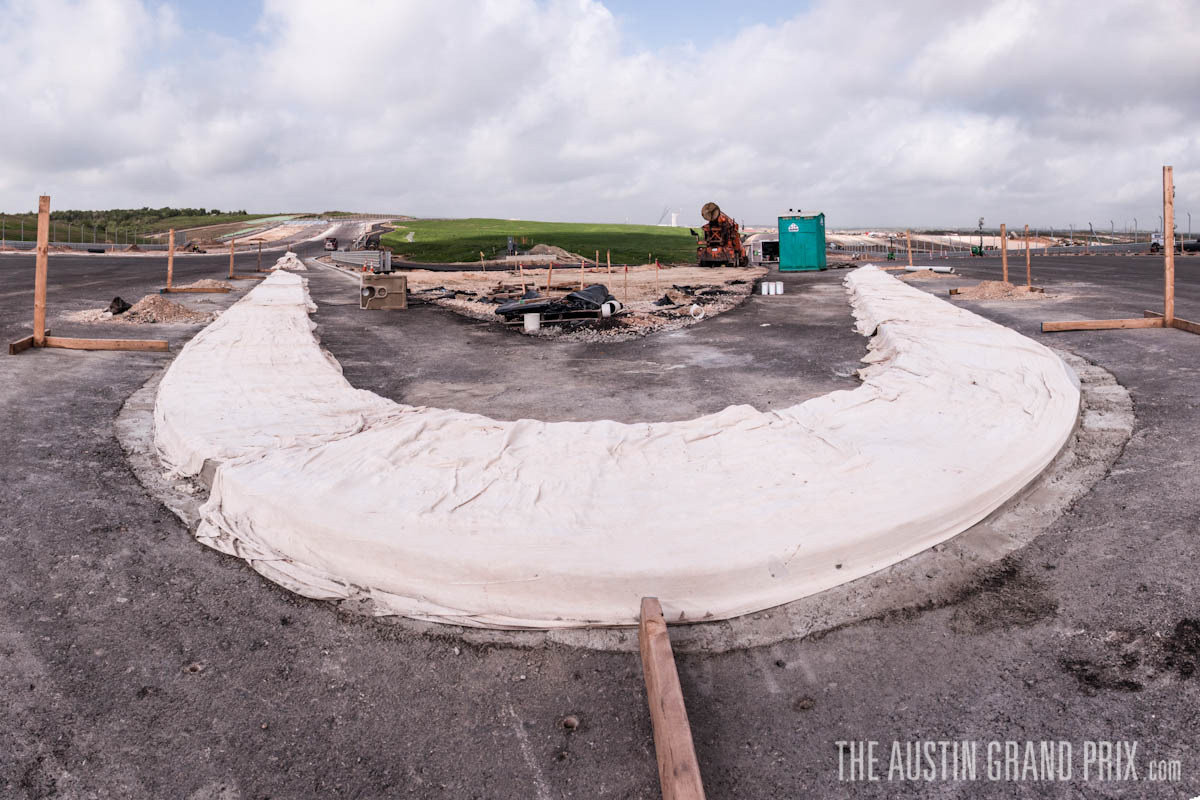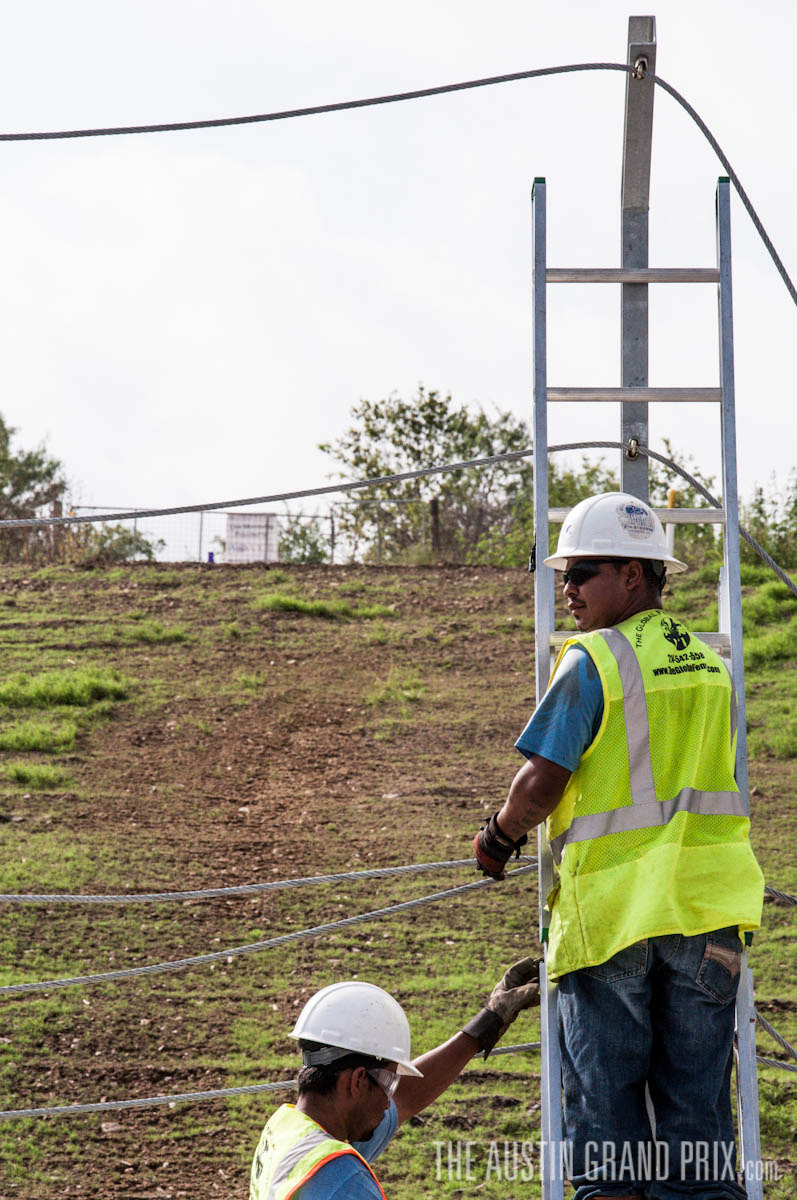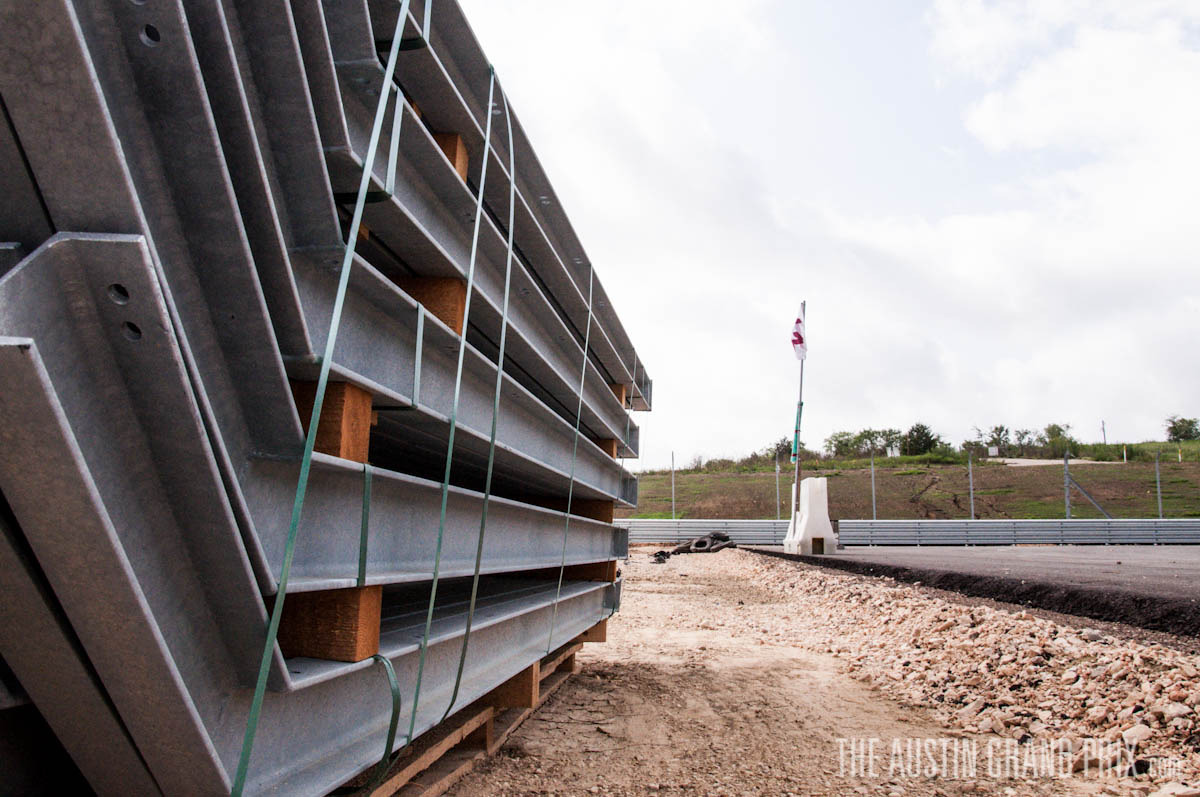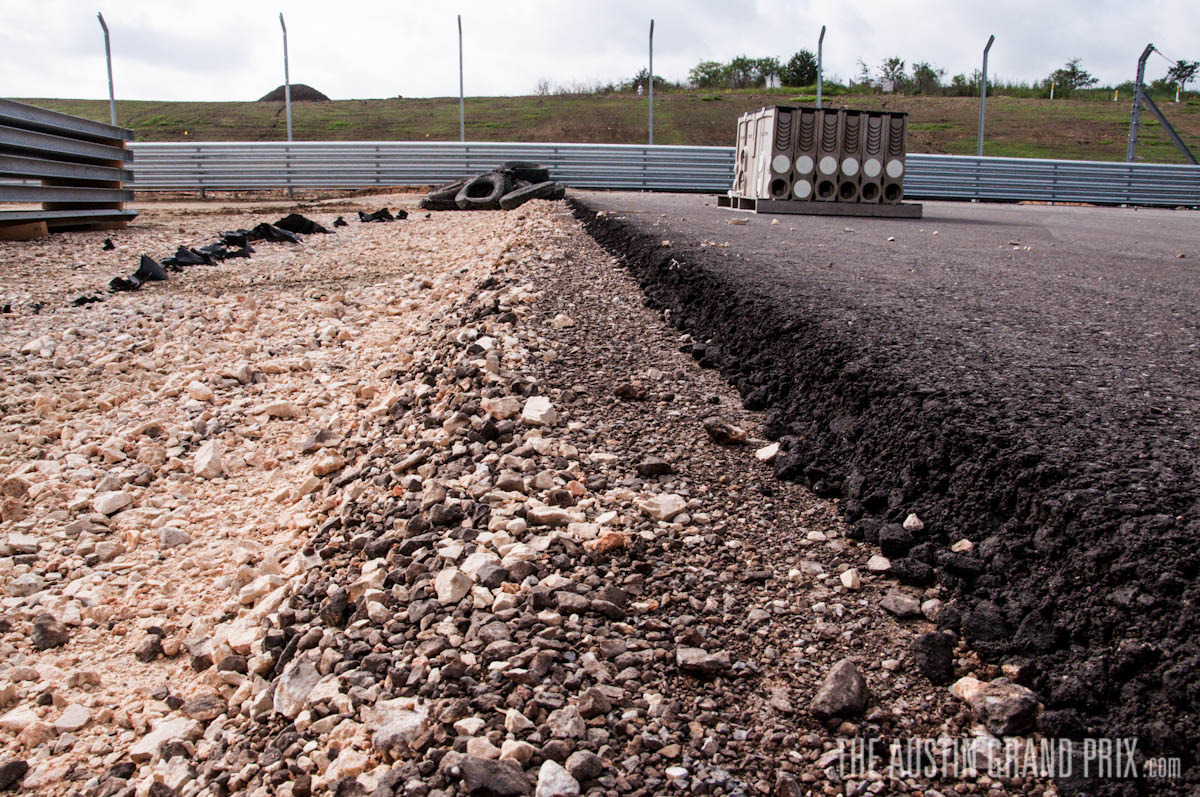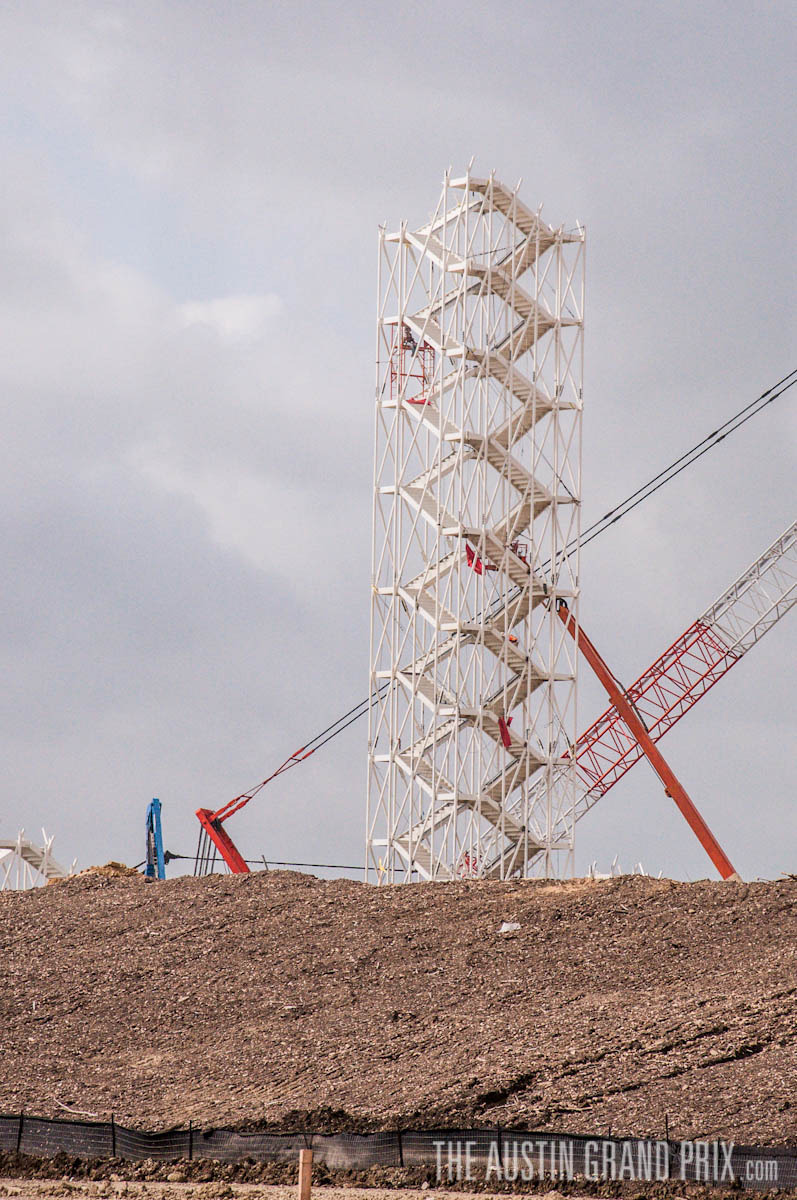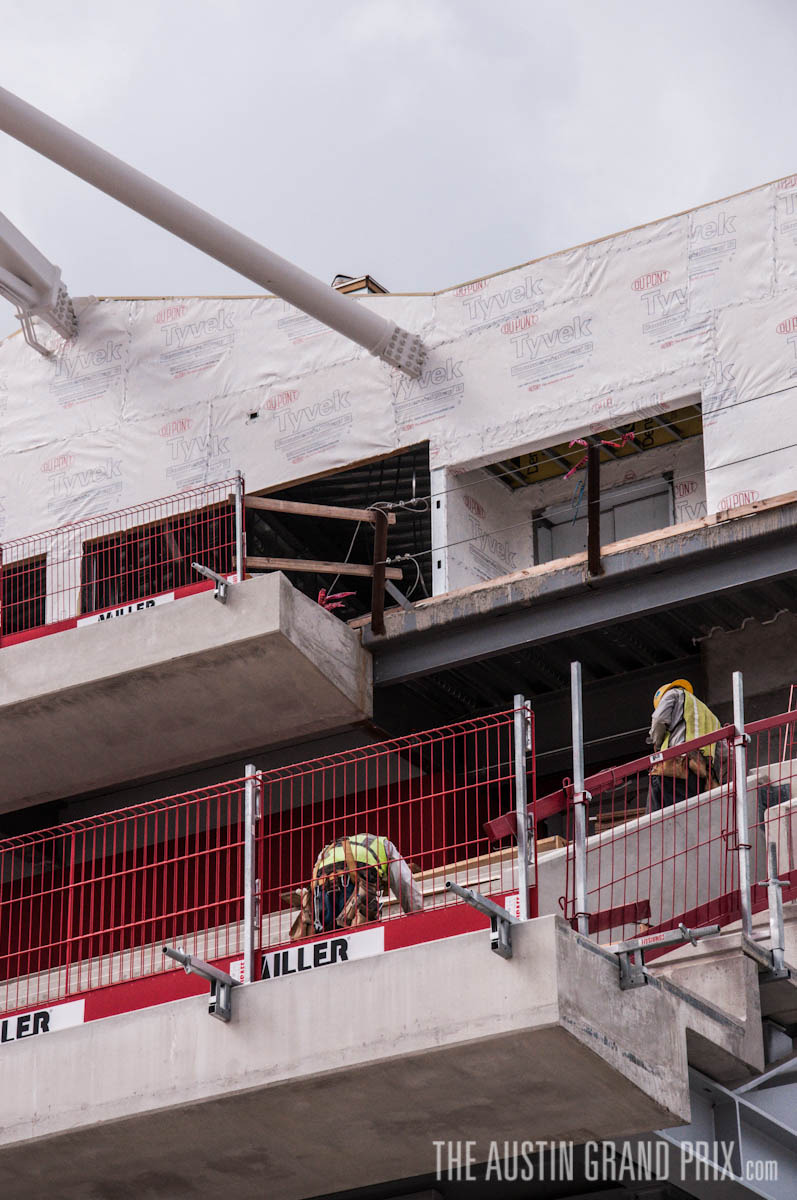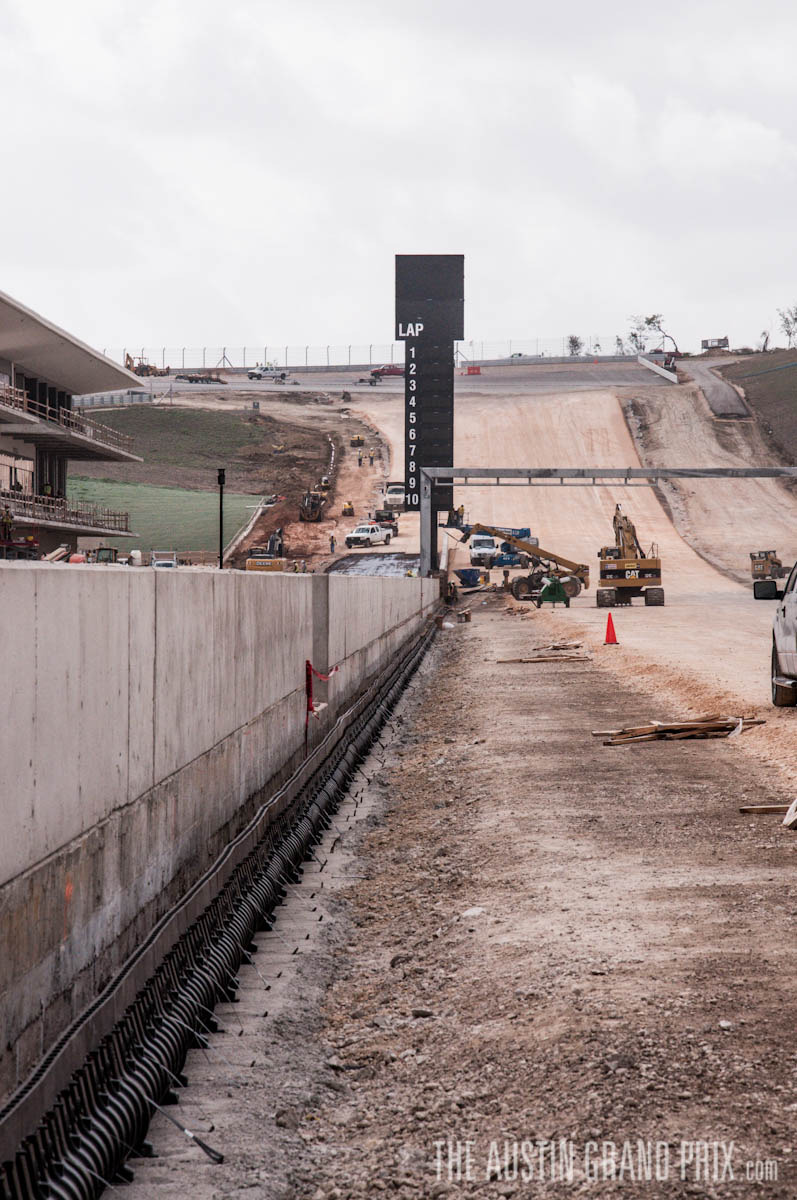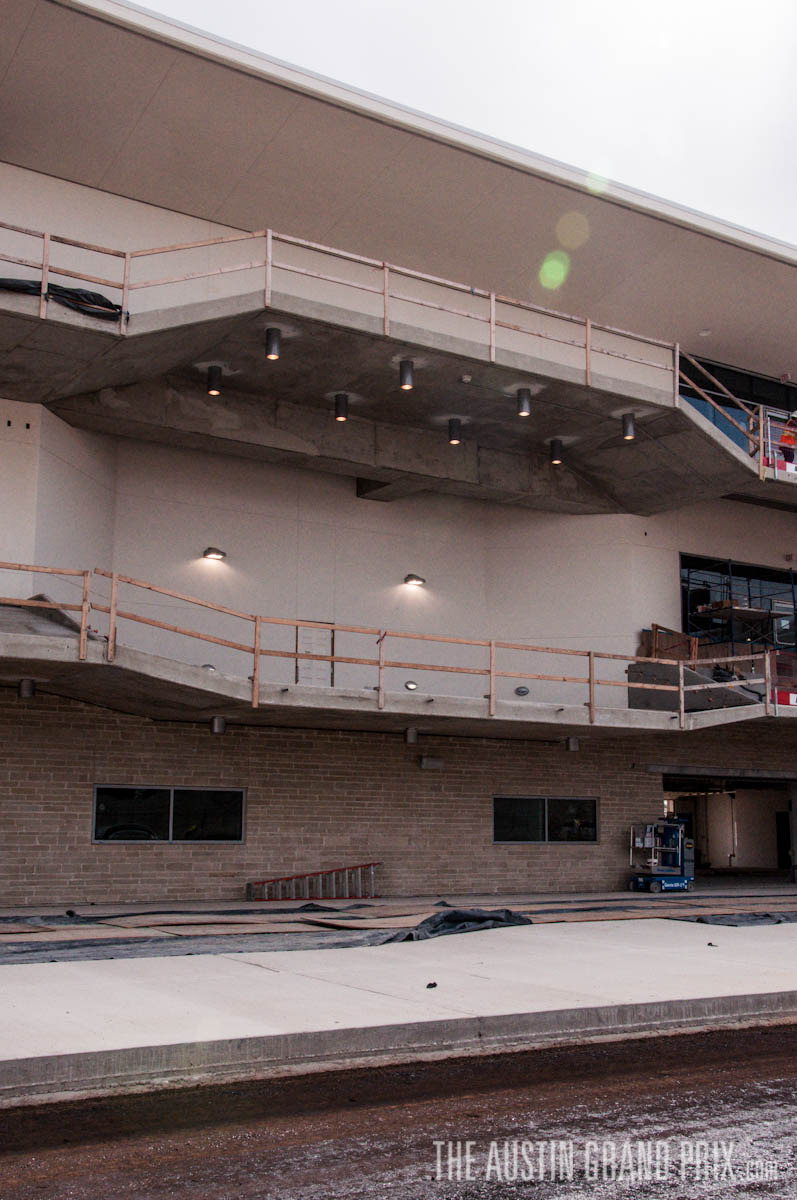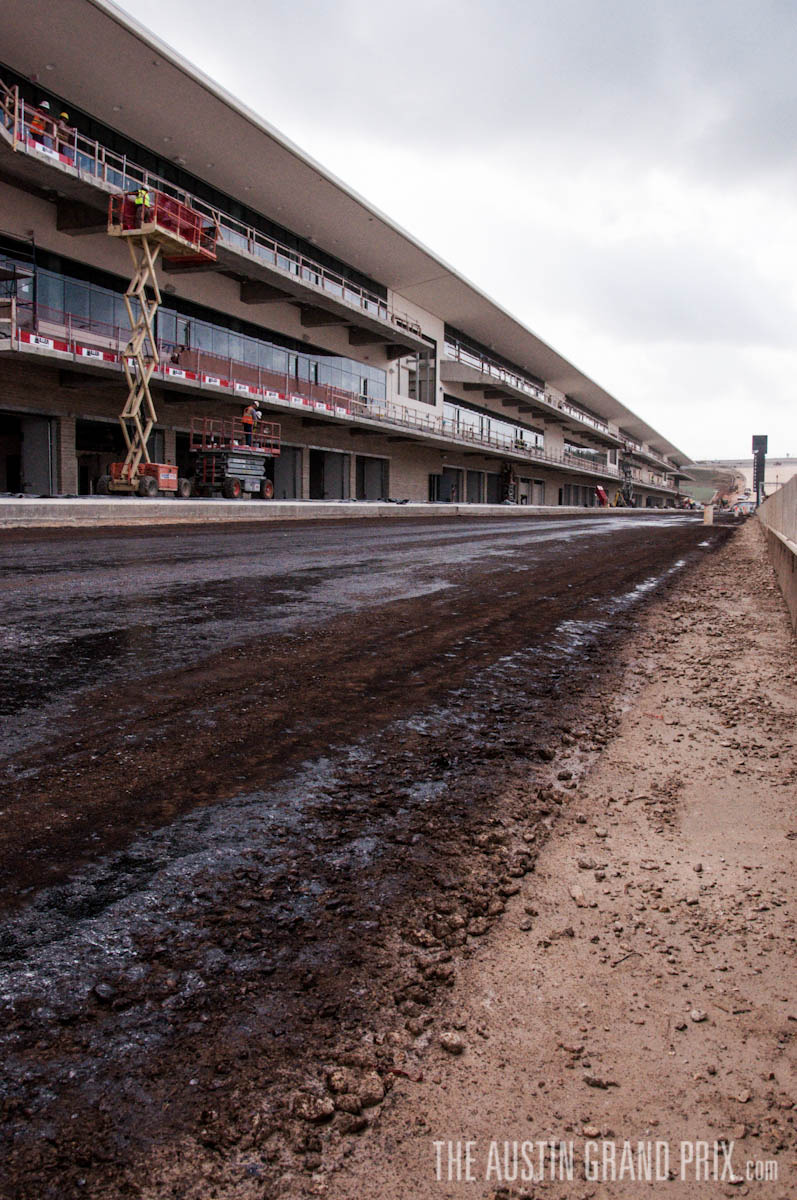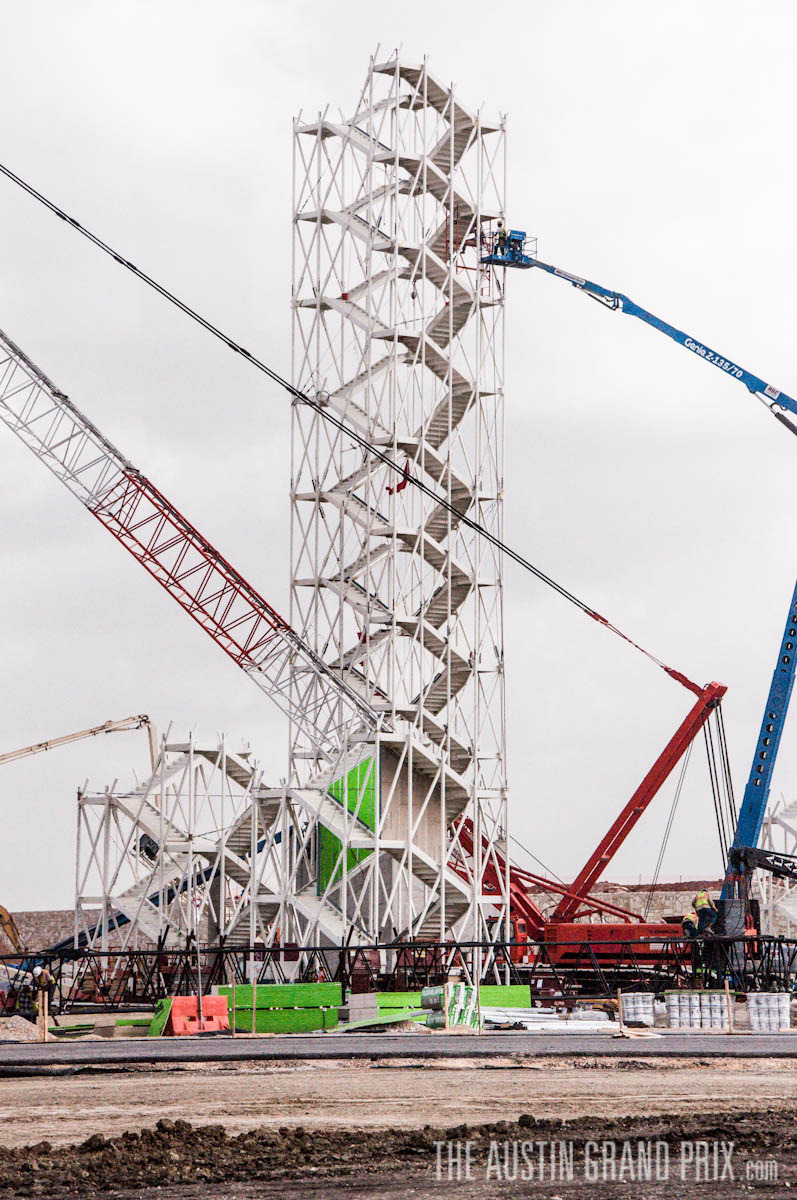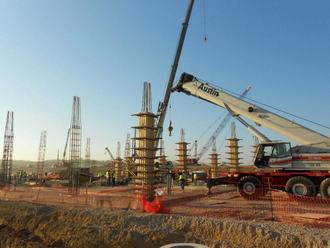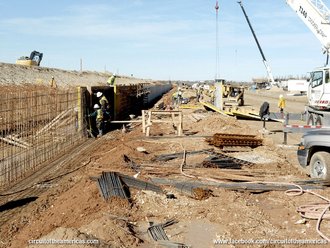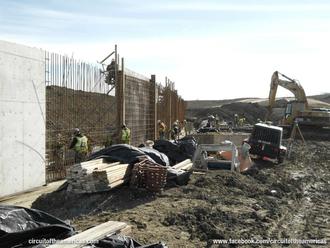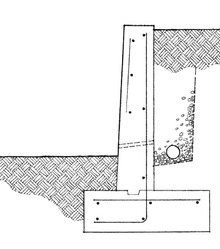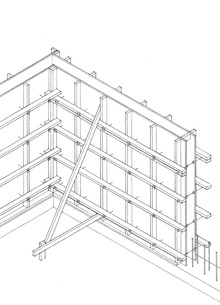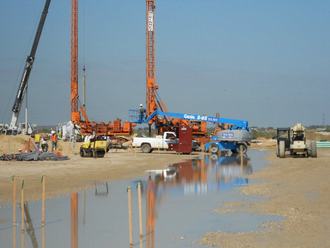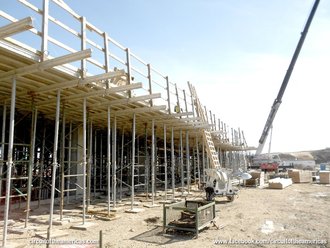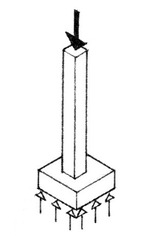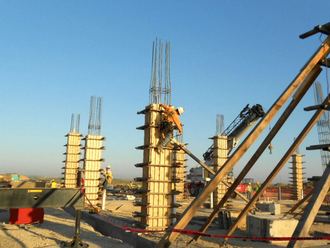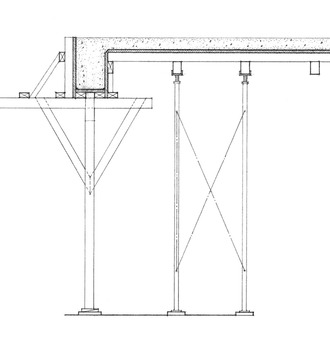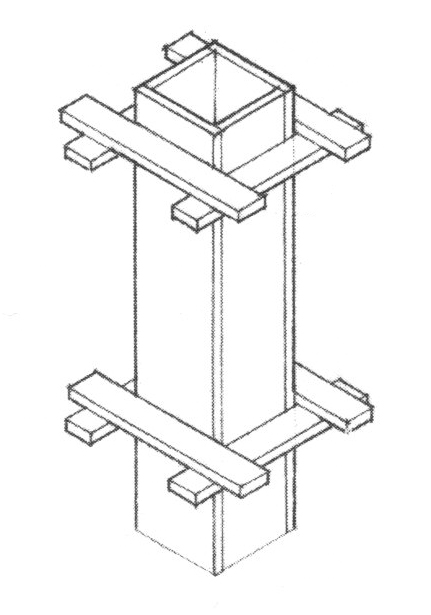// Click on any of the photos above to go to the full gallery.
With just under four months to go until the November Formula 1 race at Circuit of The Americas, construction is moving along steadily as the deadline approaches. On site today for a media tour, there was evidence of significant progress since our last visit exactly one month prior. Many are concerned that significant strides may not be enough to achieve the impossible, but COTA and their contractors are confident everything is on schedule.
First stop on the trip was Austin's zenith, Turn 1, where the temporary observation platform has been removed to make room for grandstands and permanent restroom facilities. We were able to exit the shuttle and step out on the run-off area, walking trough the gravel trap and on to the asphalt.
The difference between the track now and a short three months ago (April), makes the less than four month deadline seem completely within reach for COTA. With 700 workers on site at any point during the day, there is no shortage of hands to get this project completed. The guard rails are in place and bolted together and the FIA required fence is taught and ready for race operation. All together, the only thing remaining to finish Turn 1 is the final layer of asphalt for the race surface and some cosmetic details.
Speaking to an Austin Commercial representative (the general contractor), I learned that FIA Safety Delegate Charlie Whiting's June visit to the Circuit (post Canadian Grand Prix) was very positive. Concerns about completion where squashed when compared to recent F1 tracks like Korea and India, both of which staged races but fought the clock late into the night before their respective events. COTA's FIA inspection is scheduled a minimum of 60 days before F1 arrives on track, which makes the weekend of Sept 15-16 the true target for circuit operation.
Continuing on the racing line to our next stop at Turn 11, our ride was smooth and free of previous bumps and rattles from a dirt surface; only the circuit's inherent undulation and natural character came through. Despite traveling only 30 miles per hour in a large shuttle bus, we were able to get a taste of the complex maneuvering that will be required by future drivers; they will certainly enjoy the challenges the first half of the circuit presents.
Stopping at Turn 11 was an opportunity to survey the progress in just one month since Mark Winterbottom's visit to the circuit. This hairpin turn is surprisingly narrow so cars must make their move early coming out of Turn 10 and secure their position before entering Turn 11. In terms of progress, the access road behind the barriers looks complete while the kerbs and fencing are just behind at about 50% completion. Like the majority of the track, the run-off area and track surface are ready to receive final treatment.
Traveling down the main straight to Turn 12, it's hard to not focus on the Tower under construction. With many of the prefabricated steel sections in place, the commanding white tower dominates the western side of the circuit even though it has yet to reach its 251 foot peak. 8" steel tubes painted COTA red will create the canopy of the Tower and stretch down to the amphitheater below. Some evidence of these red tubes adorns the back side of the Main Grandstand and will also be part of the Grand Plaza entrance on the far west side of the track. We didn't stop to look at the Tower, but I'm looking forward to investigating it in the future to understand how the amphitheater and Tower will connect.
Our final stop - on the main straight - was the heart of the on-site action today. With the paddock building on the left, the Main Grandstand on the right, and Turn 1 in the background, the activity and excitement levels here are electric. The Main Grandstand's canopy structure is complete and the first piece of canopy covering has just been installed. The glass windows of the paddock building are practically done and the main scoreboard and starting line gantry are in position. Much remains to satisfy the typical paddock club clientele from what's visible on the track below, so crews are likely beginning to focus more on the buildings and guest amenities as the track and safety elements near completion.
In total, the pieces of the puzzle that will transform this circuit into America's new home for motorsports are secret no more. The world's greatest drivers will soon compete on this track; the top three will grace the podium, spraying champagne over the edge and rewarding their teammates and crew members for their hard work. Thousands of fans have dreamed about the return of an American F1 race for over five years. Within a matter of months now, all the glory will be within arm's reach.
Need seats at Circuit of The Americas? Buy your USGP tickets from TicketCity.
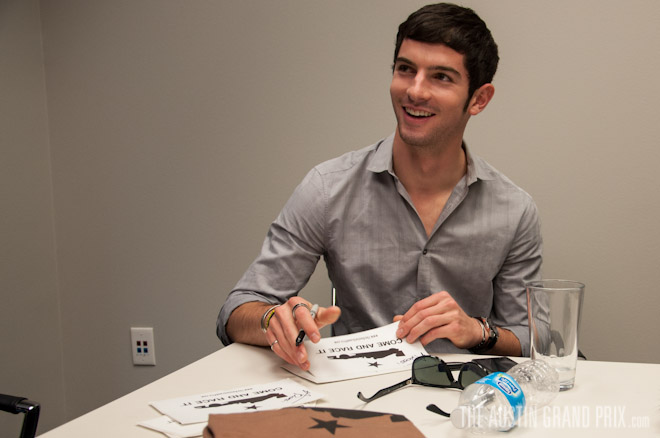 Alexander also autographed some COME AND RACE IT stickers and shirts - keep your eyes peeled for this great giveaway!
Alexander also autographed some COME AND RACE IT stickers and shirts - keep your eyes peeled for this great giveaway!


